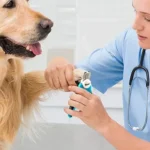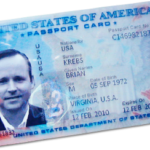Introduction
Hand, Foot, and Mouth Disease (HFMD) is a common viral infection that affects children, typically causing fever, painful mouth sores, and rashes on the hands and feet. While most cases of HFMD resolve on their own, there are instances when a doctor’s intervention is necessary. This guide will help you recognize when it’s time to seek medical attention for your child.
Symptoms of HFMD
Before deciding whether a doctor’s visit is necessary, it’s important to know the typical symptoms of HFMD, which include:
- Fever
- Painful blisters or ulcers in the mouth
- Rash or red spots on the hands and feet, which may develop into blisters
- Sore throat
- Loss of appetite
- Fatigue or irritability
When to Take Your Child to the Doctor
In most cases, HFMD can be managed at home with supportive care. However, there are certain situations where medical advice is needed:
- Persistent High Fever
If your child’s fever remains high (above 38.5°C or 101.3°F) for more than three days, or if it spikes suddenly, it may be a sign of a more severe infection or complication. High fever can also lead to dehydration, which is particularly dangerous for young children. - Signs of Dehydration
One of the most common complications of HFMD is dehydration, especially when painful mouth sores make it difficult for your child to drink or eat. Watch for signs of dehydration such as:- Dry mouth
- Reduced urination (fewer wet diapers than usual)
- Lethargy or irritability
- Sunken eyes If you notice any of these signs, consult a doctor immediately.
- Severe Mouth Sores
Mouth sores are a common symptom of HFMD, but if they become so severe that your child refuses to eat or drink, this can lead to dehydration and requires medical attention. A doctor can recommend soothing treatments and ensure proper hydration. - Difficulty Breathing or Swallowing
In rare cases, HFMD can cause complications that affect breathing or swallowing. If your child has trouble swallowing, drools excessively, or seems to be in respiratory distress, seek medical help right away. - Severe Rash or Blisters
While a mild rash is a typical symptom of HFMD, if the rash becomes severe, especially if it leads to blistering and open sores, or appears to be infected (redness, swelling, or pus), consult a healthcare professional. Severe skin irritation may require medical treatment. - Unusual Symptoms
HFMD is generally mild, but if your child develops unusual symptoms such as:- Severe headache
- Stiff neck
- Confusion or disorientation
- Sensitivity to light These symptoms could indicate a more serious condition, such as viral meningitis, and immediate medical attention is necessary.
Preventing Complications
While waiting for a doctor’s appointment, keep your child well-hydrated and ensure they get plenty of rest. Avoid acidic or spicy foods that can irritate mouth sores. Additionally, keep your child home from school or daycare to prevent the spread of HFMD to other children.
Book an Appointment at Gleneagles Hospitals
If your child is showing any of the warning signs mentioned above, it’s important to seek medical advice promptly. Gleneagles Hospitals provide expert pediatric care, with a dedicated team available to help diagnose and treat HFMD and its complications. Get in touch with us today to book an appointment [hyperlink to the appointment page] at your nearest Gleneagles Hospital.














































